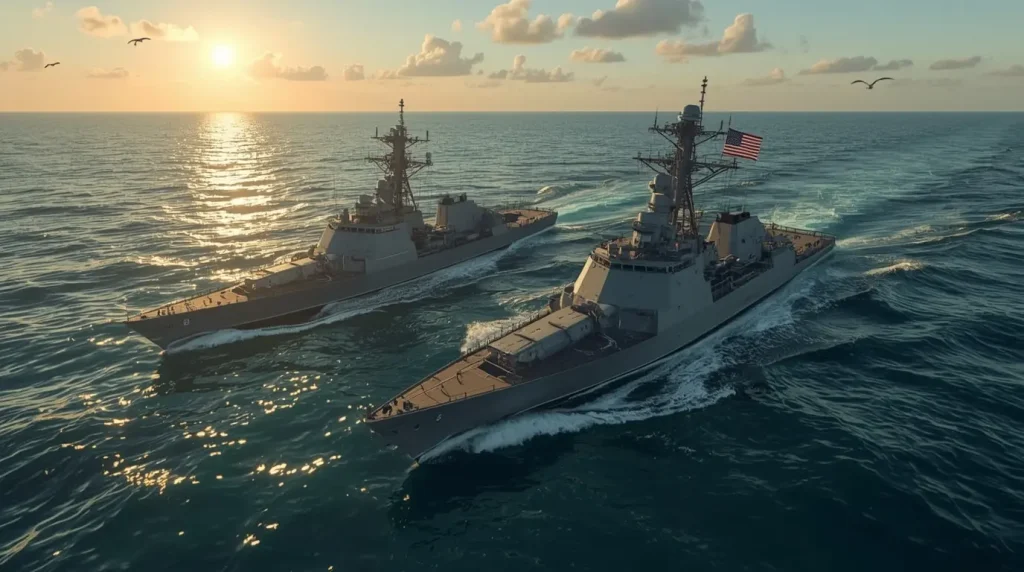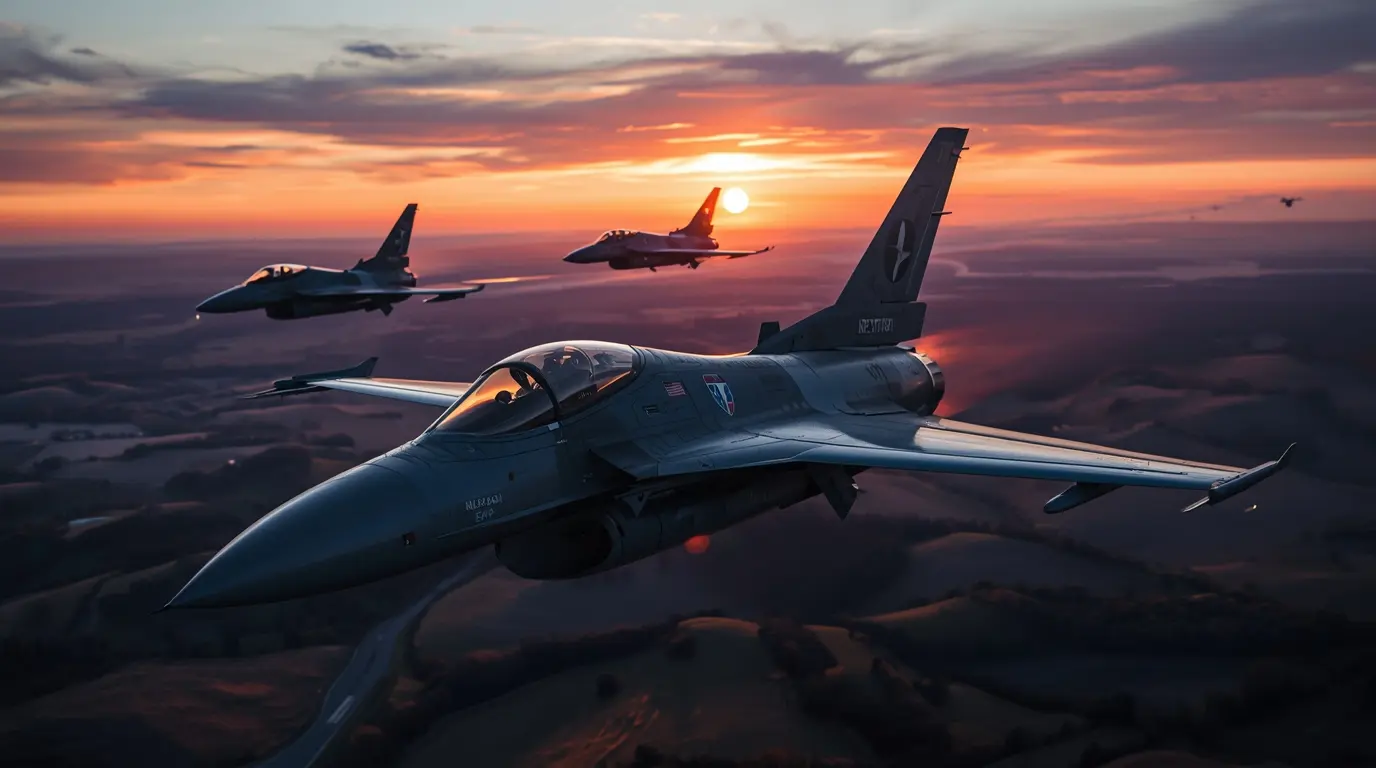Japan’s JS Chokai Destroyer Enhances Its Defense With Tomahawk Missiles
The Tomahawk cruise missiles will be integrated to the Kongo-class destroyer Chokai, sent to the United States as Japan Maritime Self-Defense Force’s first mission to fully load every Aegis Destroyer with these long range missiles. This shows the extent to which Japan’s capabilities has evolved.
In the case of JS Chokai, landing at San Diego doesn’t just mean it has arrived at the port – it has also achieved the objectives of Japan’s accelerated strategy to strengthen standoff capabilities. Previously planned procurement timelines were also shortened, and Japan’s rapid changes to his security surroundings has been the move’s main motivator. Tomahawk missile increases have the potential to deter adversaries against Japan’s strategic targets, as they can be launched from great distances.
Japan has always defended its territory, now with the acquisition of Tomahawk offensive missiles, Japan seems to have shifted its approach towards a more offensive defense strategy. With North Korea’s growing missile technology and China’s growing military presence, these offensive weapons are needed now more than ever. Japanese authority repeatedly comments on the current defense conditions as the primary reason for the current tensions around the Tomahawk, which infers a more urgent approach towards the acquisition.
JS Chokai’s current mission now is more focused on offense, aims to focus on the USS Chokai more closely with the US Navy to implement the new missiles.
Before departing the Yokosuka Navy Blue Base, the Chokai’s crew, trained with live Tomahawk missiles in dummy form to confirm all the safety protocols and avoid any potential hazards with live munitions.

Modifications and Training Portions In San Diego The next goal for the destroyer is to relocate to San Diego where it will spend the following twelve months on physical alterations for intensive crew training on the deployment of the Tomahawk missiles. In the 2025 fiscal year, Japan plans to ensure that the destroyer will be competent to use the Tomahawk missiles by the closing of the 2026 year.
Last Checkups The last challenge for the Chokai will be on the exam day of 2026. In this challenge, the Chokai will be scheduled for live fire tests that are intended to confirm the students combat ability and the ability of the crew to efficiently work in filled with these modern missiles. The training expects to be scheduled for the summer of that year.
Japan’s Broader Strategy of Missiles Japan is very skilled and advanced with missiles, and is also very fast in importing and inventing new missiles. In particular with the country’s newest addition of the tomahawk missiles that the government quickly imported. The new addition is intended to rapidly resolve the most imminent threats to the country and global security while still permitting Japan to progress on its home-grown missiles.
Japan is defining standoff missile capabilities by developing a longer-range, enhanced version of the domestic Type 12 anti-ship missile. In addition, Japan is mass-producing missiles and hypersonic glide vehicles for use on ships and submarines, as outlined in the country’s defense white paper. Japan’s imported, proven systems and domestic developments simultaneously boost deterrence and establish a self-sustained defense industry for the years ahead.
The Tomahawk Missile: A Technical Overview
Japan’s recently acquired weapon systems missiles extend over a 1,000 mile radius and allow for a 1,000 pound strike with deadly accuracy. This capability permits Japanese destroyers to tackle threats many enemy defenses away.Advanced Variants Japan has booked a total of 200 of the Block IV and 200 of the newer Block V Tomahawk missiles. The Block IV missiles have the ability to orbit a battlefield and strike at targets that have emerged. The Block V has enhanced capabilities to hit moving targets and along with other added upgrades, further increases Japan’s long range anti shipping capabilities.
Seamless Integration A significant benefit of Japan is that the Kongo, Atago, and Maya class Aegis destroyers have all been installed with the U.S. designed Mk 41 Vertical launch system. These launch cells are long enough to hold Tomahawk missiles so no significant structural alteration is needed for the vessels.

A Global Club of Tomahawk Operators The integration of these missiles provides Japan with a newly acquired status as an ally of the US with privileges to operate the Tomahawk system. The Royal Navy has had the ability to launch Tomahawk missiles for many years and more recently allies such as Australia and Netherlands have gained experience with test launches from a destroyer and frigate. This capability makes it easier for the allied navies to work with each other and strengthens the overall deterrence.
Strategic Deterrence: Calculus For A Pressured Periferus
Tokyo’s acquisition of Tomahawk missiles stems from acute security concerns in the Indo-Pacific region. In the context of Japan’s neighboring countries, Tokyo seems to be in deeper and deeper trouble.
Missile testing in the Korean peninsula remains a risk with North Korea’s aggressive goals. The Tomahawks missiles serve as a deterrent to North Korean aggression, enhancing Japan’s counterstrike capabilities.
China’s militant expansion coupled with Taiwan’s restive lessons, to Tokyo, warrants serious and rapid response measures. Conflict over Senkaku Islands in particular serves to entrench Japan’s approach. The Tomahawk missiles serves to trouble adversaries contemplating region of violence and domination.
It is easy to see that Beijing is not very satisfied with the development. According to the Chinese state media, the U.S. and Japan’s actions are ‘intensifying the dynamics of the arms race’ and claim that it threatens peace on a regional and global scale. This viewpoint shows the balancing act that Japan needs to perform: bolstering self-defense while simultaneously controlling the diplomatic and strategic responses from other great powers in the vicinity.
The Next Steps for Japan’s Missile Forces
The deployment of the JS Chokai is only the start. The JMSDF aims to equip all of its eight Aegis destroyers, two of which are Aegis Systems Equipped Vessels (ASEVs) that are still under construction, with Tomahawks. Japan is clearly putting a lot of money into its conventional deterrent with the estimated 400 missiles scheduled to arrive from fiscal years 2025 to 2027.
Japan has now deployed Tomahawk missiles on its destroyers. This will grant the nation one of the most powerful naval striking capabilities in the entire Indo-Pacific region. Enhanced destruction capabilities of the standoff missiles fundamentally bolstered the burden the Japan Maritime Self-Defense Forces (JMSDF) carries in order to sustain regional deterrence, allowing the country to face the multifaceted security issues of the 21st century. The JS Chokai will now carry a firm message to Japan’s allies regarding Japan’s commitment to its security and, along with its allies, the country’s stability.
Source: https://edition.cnn.com/2025/10/01/asia/japan-warship-tomahawk-missiles-intl-hnk-ml
For more news updates, visit our home page.




